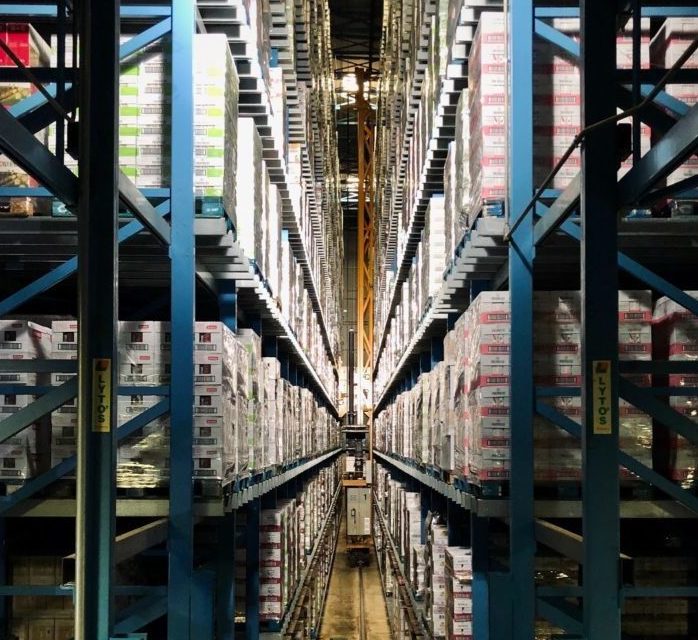
Micro-fulfillment has been a hot topic circulating throughout the logistics industry lately – and with good reason. 81% of consumers expect same-day delivery and two-thirds want to receive their package between 1 and 3 hours after placing an order. E-commerce natives, in particular, are driving this shifting landscape. In addition, increased demand for products that come with a higher urgency for faster delivery, such as online groceries, is pressuring retailers to devise new solutions to keep up. Micro-fulfillment centers (MFCs) have quickly become the answer.

So, why should businesses be investing in micro-fulfillment now?
Micro-fulfillment improves the speed and efficiency with which companies can offer last-mile or last-hour delivery methods — a vital piece of the puzzle when it comes to e-commerce competitiveness. MFCs are small, highly automated warehouses that have been strategically placed closer to the end-user, so goods can reach them quicker. They can be set up rapidly in hyperlocal urban spaces, with the potential to take advantage of existing brick and mortar retailers reducing their retail footprint.
Currently, there are four main driving forces pushing retailers to rethink their fulfillment strategies and add MFCs to their operations:
The ever-changing urban landscape
Urban expansion and space constraints are pushing e-commerce companies to rethink their distribution strategies entirely. By 2050, 68% of the world’s population is expected to live in urban areas. So, moving distribution centers closer to demand centers is a no-brainer for increasing market competitiveness and satisfying customer demand.
But, e-tailers also need to consider developing real estate trends. With US industrial real estate vacancies at near historic lows in 2020, setting up MFCs in existing stores or adapting smaller urban spaces is a very attractive prospect, when possible. The shifting infrastructural landscape of European cities makes for new hotspots for potential MFCs with underground car parks quickly being snapped up and repurposed. Ultimately, these types of urban spaces allow retailers to create strategically dispersed distribution networks efficiently, in a fraction of the time. MFCs require just a few hundred square meters, and can be up and running within a couple of months.
Advances in automation
By 2023, micro-fulfillment centers are expected to exceed 20% of the total demand for US grocery warehouse automation in revenue terms (see chart). As faster distribution and fulfillment (D&F) operations become a requirement, human labor is increasingly becoming an added-value contribution as automated D&F assumes menial tasks to better serve future, incoming demand. Implementing automation is a top priority for retailers wanting to stay with the pace of customer demand and deal more efficiently with managing diverse inventories. Setting up MFCs gives them the scope to invest in advanced automation and supply chain tech, future-proofing their operations and making them more scalable.

Source: Interact Analysis
The Covid-19 shift
Global lockdowns have sparked a consumer behavioural shift. This has prompted the number of customers shopping online to surge, often beyond existing capacity to service the spike in demand (a note to the upcoming Holiday season). This has piled even more pressure on retailers to meet the increasing demand for rapid delivery in order to stay competitive. In the US alone, 39 million households (31%) used an online grocery delivery or pickup during March 2020. Is this shift structural or circumstantial? Probably both with US shoppers now stating they are ‘very likely’ to continue using online grocery services even when the pandemic is over at a rate of 43%. While the number of in-store shoppers is likely to rise again when the crisis subsides, the Coronavirus outbreak has, indeed, fundamentally changed consumer shopping habits. MFCs are providing a viable and affordable solution for retailers to meet them.
Booming e-commerce markets
Even before the pandemic, e-commerce was experiencing continuous growth. In Europe alone, the sector is now expected to be worth 717 billion Euros by the end of 2020. Honing in on Germany, the e-commerce market is set for a staggering 10% growth this year. Considering the trend to shopping online (4 out of 5 internet users in Germany now do), it’s clear that optimizing e-commerce operations is crucial, irrespective of how the pandemic plays out.

Are MFCs too good to be true?
As the efficiency and agility of operating MFCs become apparent during the pandemic, we’re likely to see more e-commerce retailers jumping on the micro-fulfillment bandwagon. That said, it isn’t exactly a plug-and-play solution and there are several considerations retailers need to take on board before jumping straight into setting them up. Most importantly — they need to devise a strategy that works for them.
Firstly, retailers need to make targeted decisions about where automated e-commerce fulfillment will be most successful. By creating small warehouses in urban areas, the distance between retailer and customer is reduced, helping to ensure that more goods can be delivered to more people on time. So, while retailers might be tempted to leverage idle warehousing capacity to set up their MFCs, they still need to be strategically located to offer a significant benefit. Moreover, these decisions require the need to overcome the challenge of placing industrial real estate in urban locations; a one-to-one replacement is unrealistic.
Secondly, there’s the not so insignificant matter of cost. And the cost analysis is related directly to fulfillment setup. Order pickers, for example, have ‘interim solution’ written all over them. In other words, using traditional in-store inventory for online order fulfillment is not a sustainable long-term strategy. The digital-first strategy that optimizes the match between inventory, purchasing behavior and demand centers provides the required agility to optimize for ROI as well.